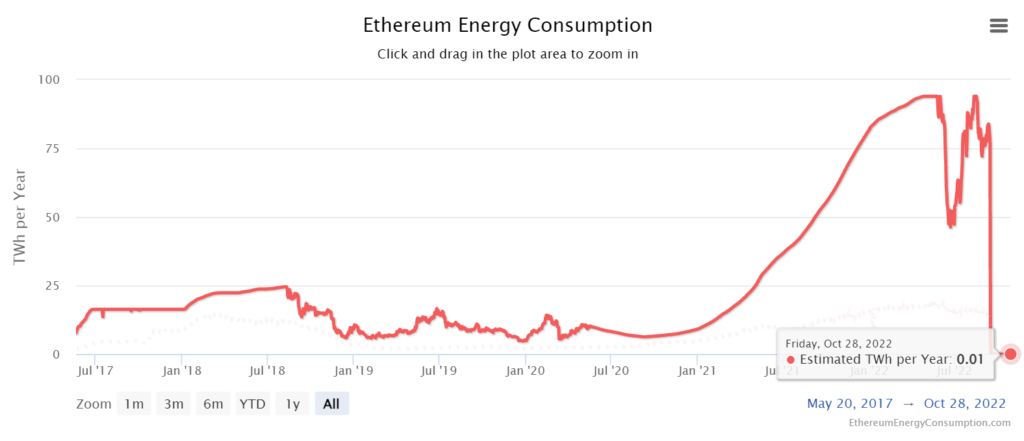Ethereum used between 46.31 terawatt hours (TWh) and 93.98 TWh of energy annually until the Merge upgrade in 2022.

The Merge reduces the power used by the Ethereum network by over 99.9%.The Merge immediately reduced the network’s energy consumption by 99.9% and is regarded as one of the biggest blockchain updates on Ethereum to date. In an effort to become a green blockchain, the Ethereum blockchain switched from a proof-of-work (PoW) consensus method to a proof-of-stake (PoS) consensus mechanism on September 15. What came next was an instantaneous and significant decrease in the Ethereum network’s overall energy consumption.

Before the Merge upgrade, in 2022, Ethereum’s annual energy consumption ranged from 46.31 terawatt hours (TWh) to 93.98 TWh. On December 26, 2019, 4.75 TWh of energy were used by Ethereum, the least amount ever.

Since Oct. 15, the day of the Ethereum Merge, Ethereum’s energy consumption has decreased by nearly 99.9% and has remained low. As a result, the network now has an annual carbon footprint of 0.1 million tonnes of CO2 (MtCO2). According to digiconomist, the energy required to watch two hours of YouTube is equal to 0.03 kWh of electrical consumption and 0.01 kgCO2 of carbon dioxide emissions when expressed in terms of individual Ethereum transactions.
Despite the joy around Ethereum’s switch to PoS, community members voiced worries about the centralization of the blockchain and increased regulatory oversight. The centralization component was immediately apparent following the Merge since only two addresses were responsible for 46.15% of the nodes used for data storage, transaction processing, and adding new blockchain blocks. While supporters of Ethereum assert that anyone with 32 Ether (ETH$1,638) can become a validator, it is crucial to remember that 32 ETH, or about $41,416 for a novice or common trader, is not a tiny amount.
